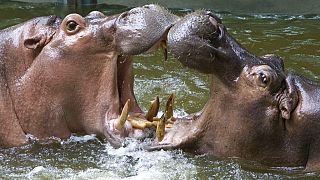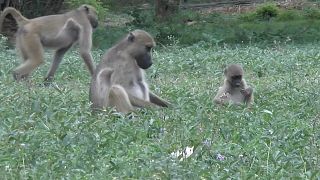Kenya
The National Museums of Kenya has launched an app to help the country's wildlife authorities track and log rare and common mammals and record whether the species and their habitat are thriving.
At the Soysambu Conservancy in Nakuru, southern Kenya, tourists come to experience the rich biodiversity.
When John Perret, the owner of a camel safari, takes out his phone, it is not merely to take a picture.
He is actually using the Makenya, Mammal Atlas Kenya app which allows users to record all the details of any mammals they spot.
"This app now helps us to really map where these animals are and if they're in trouble we can get the authorities to come and help us and it gives me a great opportunity to show the tourists exactly where they are", the operator says.
"This will be a continuous census and we will know how well our animals are performing", he also notes.
In addition to benefiting tourism and those who work for animal welfare, the free app can be a tool for raising awareness. Researcher Simon Musila wants the general public to seize this opportunity to positively impact wildlife conservation.
"We want to also to encourage the general public to participate in conserving mammals and one of the basic ways they can actually do that is whenever they see mammals anywhere they submit a record, that way is one of the important ways for them to participate in conserving mammals", he says.
Identify best breeding conditions
The Kenyan Wildlife Service (KWS) says around 25,000 species of animal and 7000 species of plants have so far been recorded.
If making an inventory of the species is important, collecting additional data that enables monitoring the living conditions of the animals is another objective of the app.
"It will also include the recording of the breeding conditions specifically if you see an endangered species and you see that it has young ones that are quite encouraging because we will know that that species actually will survive in the environment", Musila says.
"[...] It will be a game changer because it will also capture the habitat type where that species is found", the researcher at the National Museums of Kenya adds enthusiastically.
"If the habitat is in good condition then we know that the endangered species will survive in that particular habitat in the long run."
It is indeed essential to identify conditions in which animals are still able to thrive or at least cope. The effects of drought across parts of Kenya threaten species like rhinos.
The Mammal Committee of Nature Kenya, the National Museums of Kenya, and collaborators created the app.













Go to video
Eliud Kipchoge returns to the London Marathon
Go to video
Kenya: Ant smuggling suspects set to be sentenced on May 7
01:16
Africa mourns Pope Francis, a voice for peace and justice
00:47
Ghana: President Mahama suspends Chief Justice Gertrude Torkornoo
Go to video
Police rescue 33 West Africans from a human trafficking scam in Ivory Coast
Go to video
Pope Francis' funeral scheduled Saturday April 26